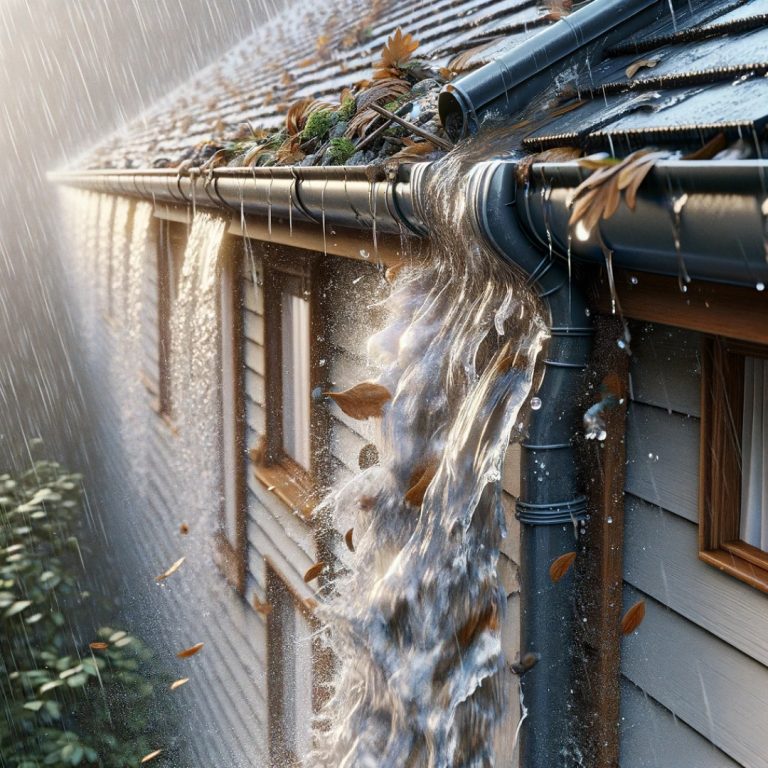Overflowing gutters can wreak havoc on any home, leading to damage to the foundation, siding, and landscape. With the potential for costly repairs and even irreversible damage, it’s crucial to understand the causes of gutter overflow and take preventive measures. In this blog post, you’ll learn how to identify the culprits, address the issue, and implement long-term solutions to keep your home safe from the perils of overflow gutter problems.
Gutter maintenance might not be the most glamorous task, but it’s an essential part of home upkeep. Gear up for a deep dive into the world of overflow gutter prevention and arm yourself with the knowledge to protect your home from water damage.
Key Takeaways
- Identify the root cause of gutter overflow to prevent Damage.
- Regular cleaning and maintenance can help keep gutters debris-free and functioning properly.
- Investing in larger gutters, seamless systems, or professional inspections may be necessary for long term solutions to chronic issues.
The Perils of Overflowing Gutters: Identifying the Culprit
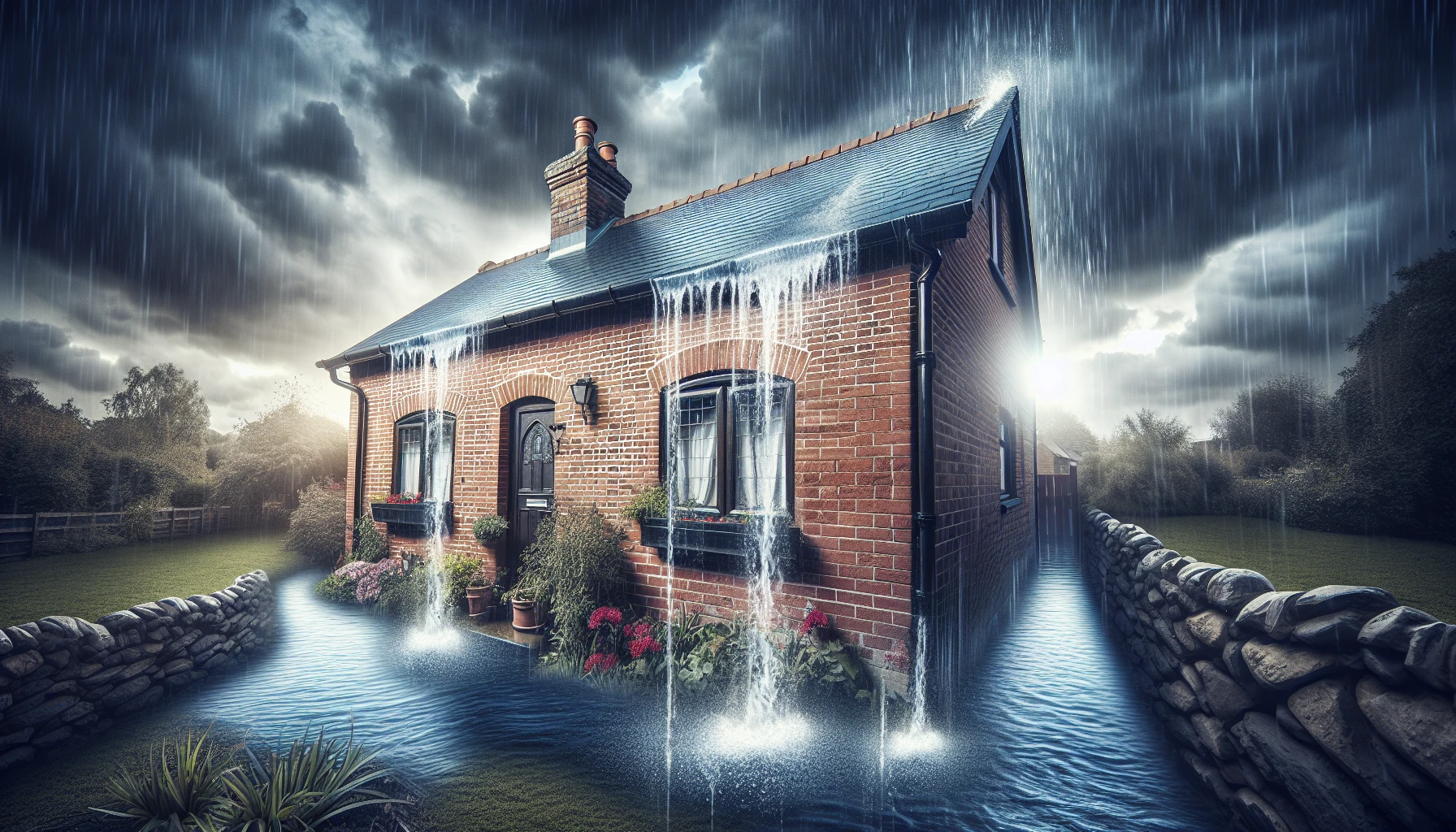
Gutter overflow is a cause for concern among homeowners. It can result in various issues, from foundation damage to landscape erosion. But what is actually causing this issue? Understanding the root causes is the first step in addressing the problem and preventing further damage. The most common reasons for overflowing gutters include debris buildup, inadequate gutter size, and gutter positioning flaws.
Understanding the cause of gutter overflow requires an examination of these factors. Once you identify the cause, you can implement appropriate solutions to halt gutter overflow and prevent future home damage.
Debris: The Primary Offender in Clogged Gutters
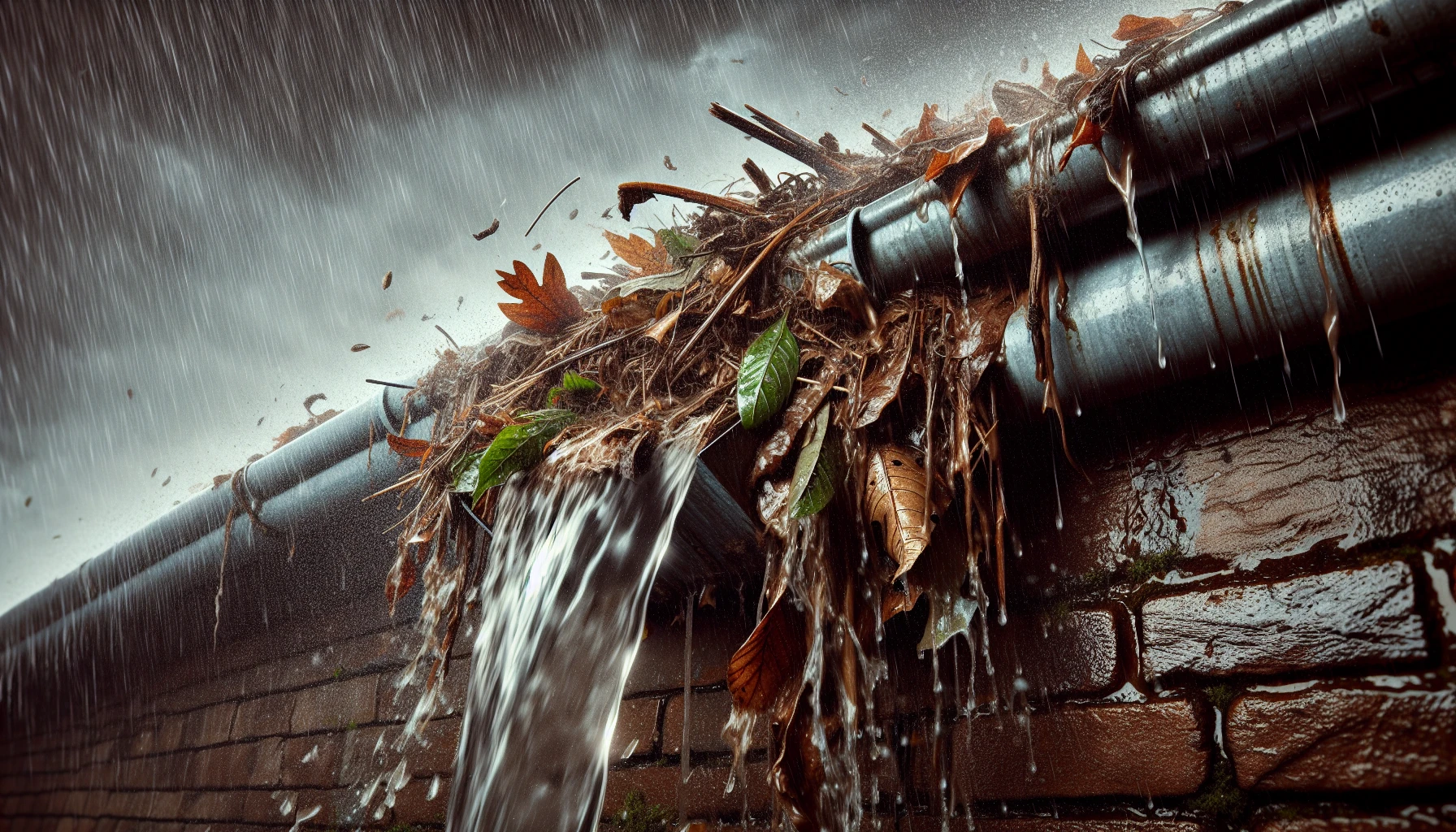
Debris clogging, such as leaves and twigs, is the primary offender in clogged gutters. When debris accumulates, it forms a barrier that impedes the flow of water, leading to overflow. This can cause significant damage to the roof, siding, and foundation of your home.
Preventing the damage that clogged gutters can inflict requires regular cleaning. By removing debris from your gutters, you allow water to flow smoothly through the gutter system, averting overflow and protecting your home from possible damage.
Inadequate Gutter Size: When Rain Overwhelms
Sometimes, even clean gutters can overflow if they’re too small to handle heavy rainfall. Inadequate gutter size is another common reason for gutter overflow, as smaller gutters may not have the capacity to deal with excess rainwater. This can lead to water pooling and overflowing, potentially causing damage to your home’s foundation, siding, and landscape. Having too few gutters installed can also contribute to this issue, as the existing gutters may struggle to manage the water flow effectively.
To address this issue, you may need to upgrade to larger gutters. Wider gutters can better manage heavy rainfall and reduce the risk of overflow. When determining the appropriate gutter size for your home, consider factors such as:
- Roof area and pitch
- Rainfall intensity
- Gutter capacity
- Local climate
Gutter Positioning Flaws: Pitch and Alignment Problems
Incorrect gutter positioning can also lead to overflow problems. Improper pitch or alignment can cause water to pool in the gutter, eventually overflowing and causing damage to your home. If your gutters are overflowing, it’s important to inspect and adjust their positioning to ensure proper water flow.
Using a level, you can evaluate the pitch of your gutters and make the necessary adjustments. By securing a consistent slope throughout the gutter’s length, you can improve water flow and prevent overflow. If the problem persists, consulting a professional gutter contractor can provide further insight and solutions.
Taking Action: How to Address Overflowing Gutters
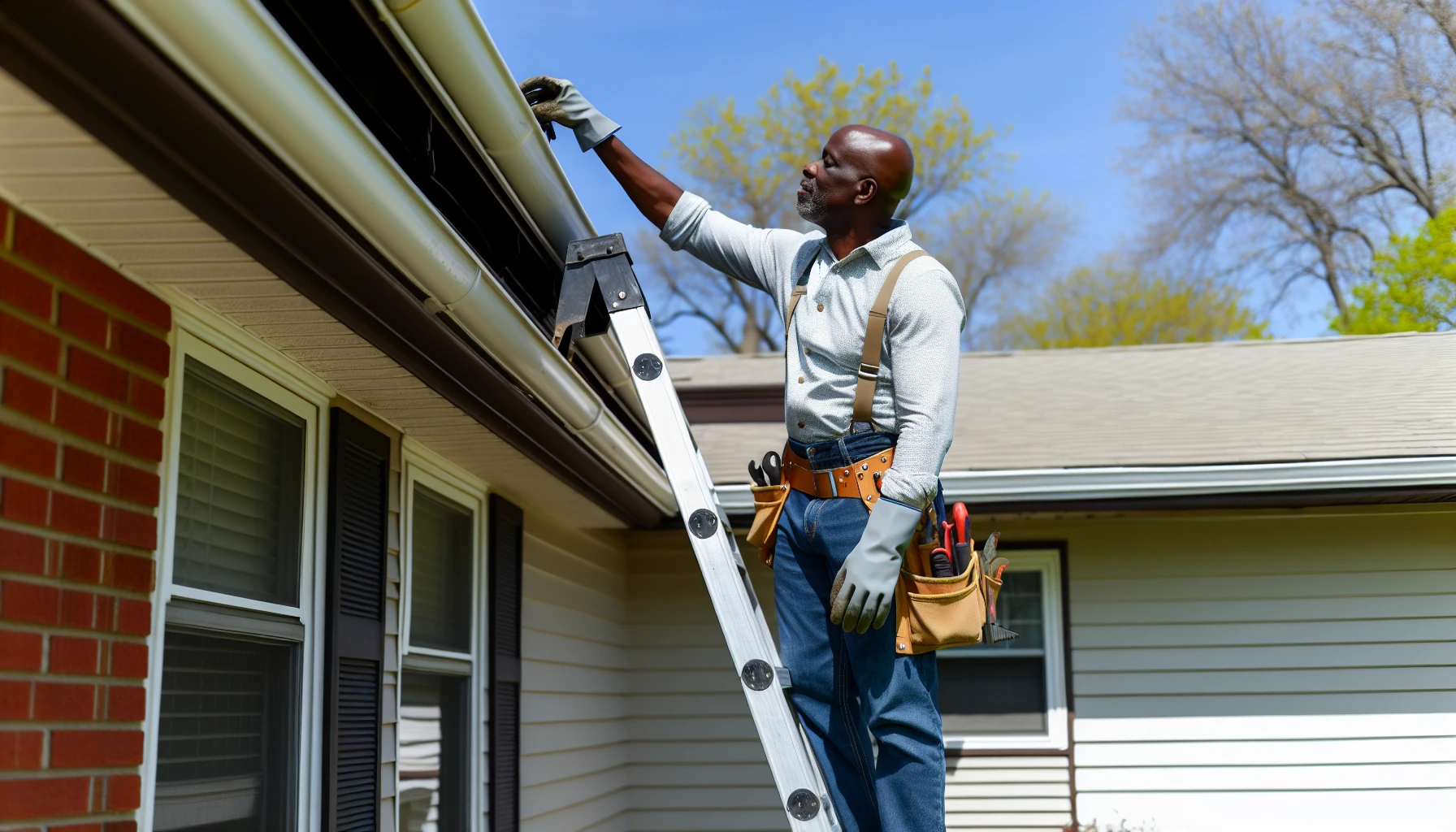
Having identified the potential causes of gutter overflow, it’s time to act and stop gutter overflow. Addressing this issue involves debris removal, adjusting gutter pitch, and assessing your system’s size. By addressing these aspects, you can maintain a well-functioning gutter system that safeguards your home from overflow damage.
Remember, prevention is preferable to repair. By maintaining your gutters, you can sidestep costly repairs and uphold your home’s structural integrity.
Clearing the Way: Debris Removal Techniques
Removing debris from your gutters is the first step to prevent overflow. Several techniques exist for debris removal, from hand-cleaning to ladder-free methods. Manual cleaning requires a ladder, bucket, gloves, and a gutter scoop. Always exercise caution and wear non-slip shoes when working at heights.
For those who prefer a ladder-free approach, various tools and gadgets are available. Some options include:
- Leaf blowers with attachments
- Power washers
- Shop vacuums
- Gutter cleaning hose attachments
With the right tools and techniques, you can ensure you have enough gutters and fix gutters to keep them debris-free and functioning properly as your gutter sits protected with a gutter helmet.
Reassessing Your System: Adjusting Gutter Pitch and Size
Adjusting the pitch and size of your gutters is another crucial step to address overflow. A proper pitch ensures that water flows smoothly through the gutter system, while an adequate size guarantees that your gutters can handle the volume of rainwater. To adjust the pitch of your gutters, follow these steps:
- Remove one end bracket of the gutter.
- Set the gutter in its correct position.
- Repeat the same step on the other end of the gutter.
- Ensure that the slope is consistent throughout the gutter’s length, with no low spots or valleys where standing water can accumulate.
- Tighten the brackets to secure the gutter in its new position.
To determine the appropriate size for your gutter system, follow these steps:
- Calculate the square footage of your gutter’s drainage area by multiplying the length and width of each of your roof’s slopes.
- Consider factors such as roof pitch and maximum rainfall intensity.
- If necessary, consult a reputable gutter expert for advice on the correct size for your home.
Preventative Measures: Stopping Gutter Overflow Before It Starts
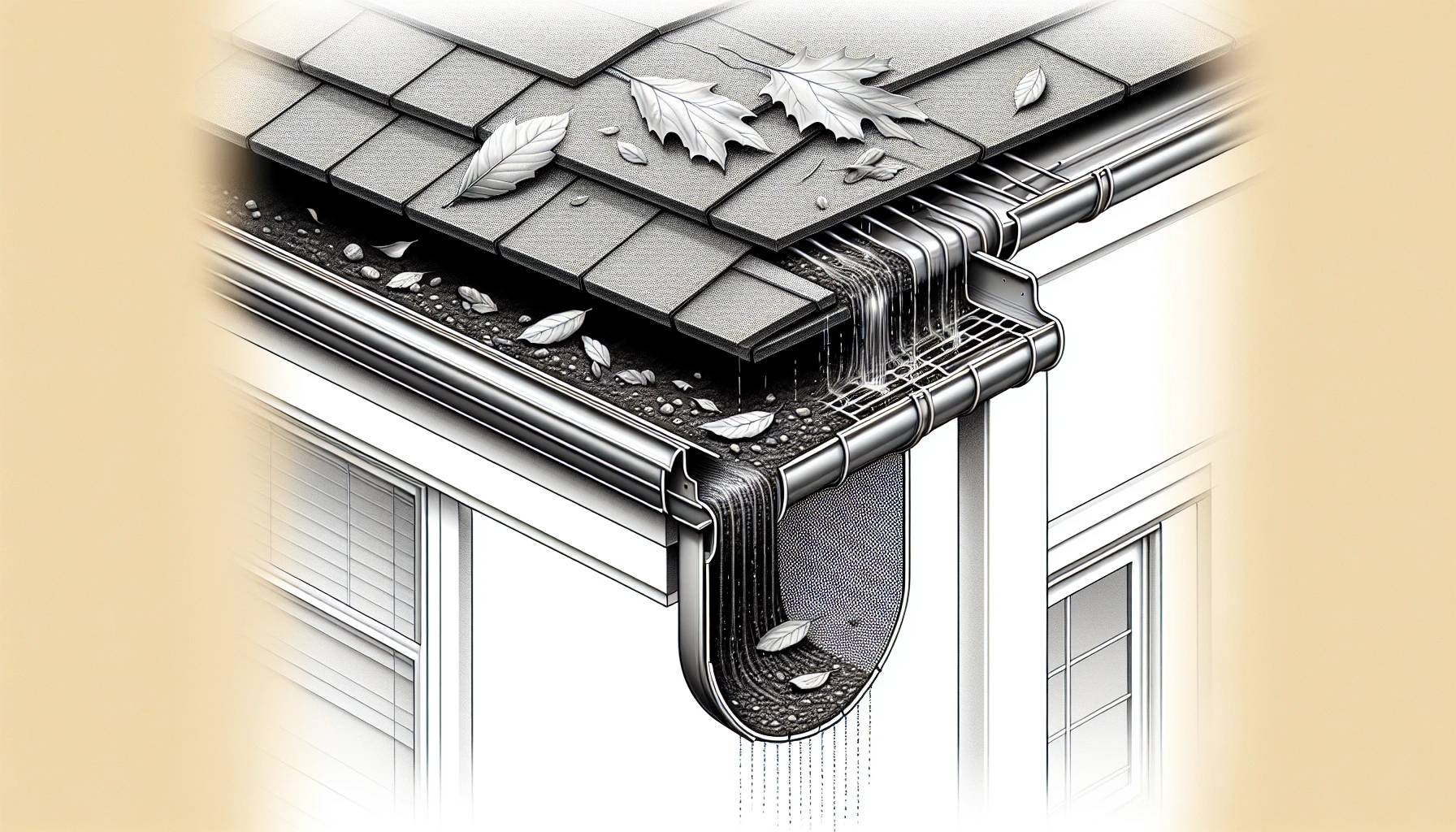
Preventative measures are key to stopping gutter overflow before it starts. By regularly cleaning your gutters, installing guards and screens, and maintaining your downspouts, you can ensure that your gutter system is functioning optimally and preventing overflow.
Taking a proactive approach to gutter maintenance not only saves you time and money in the long run but also helps protect your home from the potential damages that overflowing gutters can cause.
Regular Cleaning Routines: Keeping Gutters Debris-Free
Setting up a regular cleaning schedule for your gutters is vital for their proper functioning and debris removal. Depending on the tree coverage around your home, it’s recommended to clean your gutters once or twice a year.
When cleaning your gutters, make use of the following tools:
- Puncture-resistant work gloves
- Gutter scoops
- Gutter guards
- Leaf blowers
Regular maintenance not only prevents clogs and overflow but also prolongs the life of your gutter system, saving you money on costly repairs and replacements.
Enhancements: Installing Guards and Screens
Investing in gutter guards and screens can help minimize debris accumulation in your gutters. These devices:
- Block leaves, twigs, and other debris from entering your gutters
- Facilitate unobstructed rainwater flow
- Thwart potential clogs and overflow
- Protect your home from water damage
Various types of gutter guards and screens are available, such as mesh gutter guards, foam gutter guards, and screen gutter guards. Each type offers unique benefits, so consider your specific needs and the types of debris common in your area when selecting the right gutter guard for your home.
Downspout Diligence: Ensuring Proper Water Runoff
Maintaining clear and functioning downspouts is key to proper water runoff. A well-cared-for downspout stops water from pooling and overflowing, thereby protecting your home’s foundation and landscape from possible damage.
To maintain your downspouts, follow these steps:
- Regularly check for and remove any debris that may cause blockages.
- If you notice any issues with your downspouts, such as water pooling or overflowing, take action to address the problem.
- Consult a professional if necessary.
By following these steps, you can ensure that your downspouts are functioning properly and prevent any potential damage to your home.
By keeping your downspouts in good working order, you can prevent gutter overflow and protect your home from water damage.
Advanced Solutions: Long-Term Fixes for Chronic Gutter Overflow
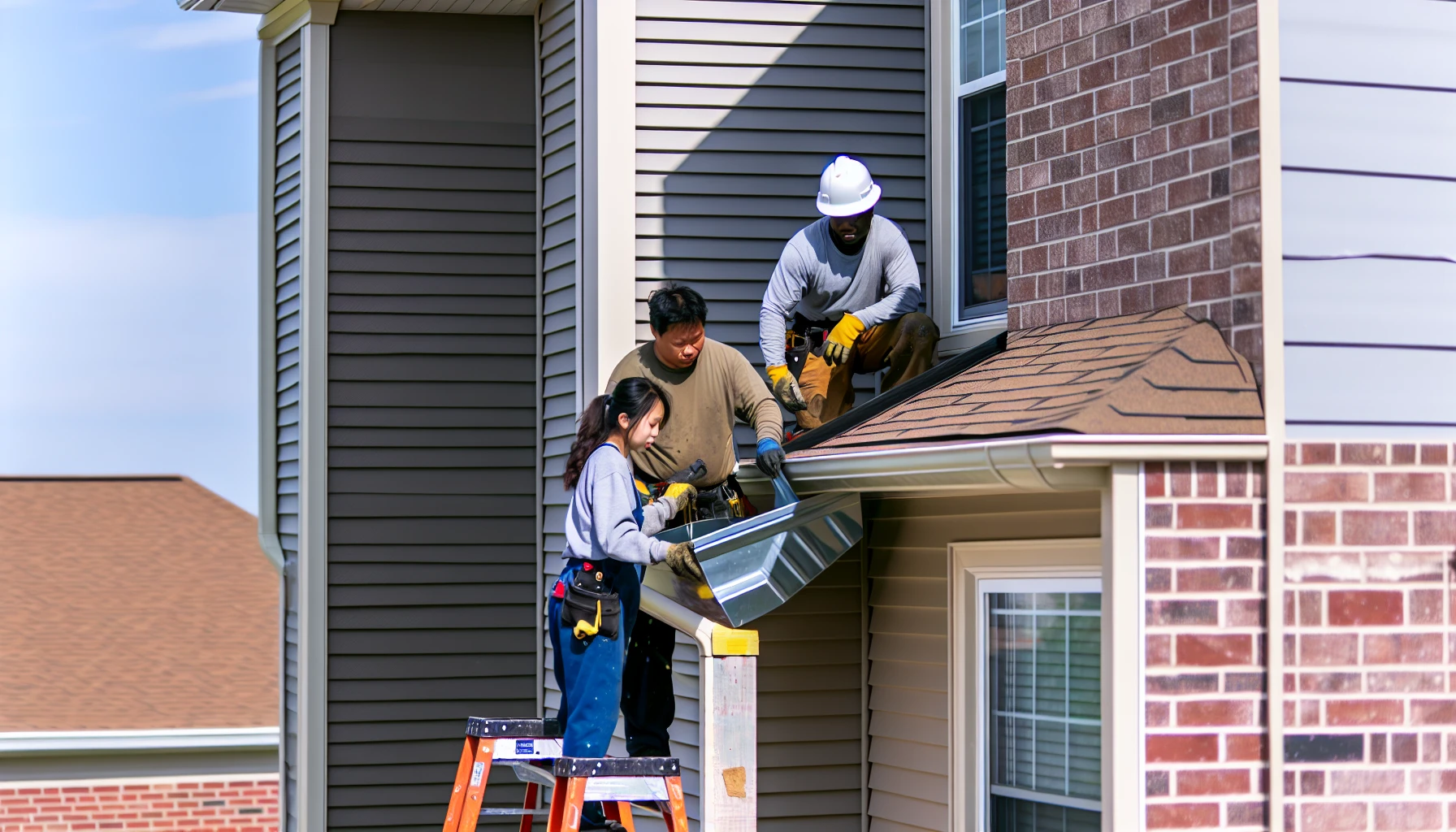
If you’ve tried all the basic preventative measures and still experience chronic gutter overflow, it’s time to consider advanced solutions. Upgrading to larger gutters, investing in seamless gutter systems, and seeking professional inspections can provide long-term fixes for your gutter overflow issues.
These advanced solutions not only help manage overflow but also offer added benefits, such as improved aesthetics, enhanced protection, and reduced maintenance costs.
Gutter Upgrade: The Case for Larger Gutter Replacement
Switching your existing gutters for larger ones can effectively manage heavy rainfall and prevent overflow. Bigger gutters provide increased capacity, improved drainage efficiency, and a lower risk of clogging. By upgrading to a suitable size, you can ensure your gutters can accommodate the volume of rainwater and safeguard your home from possible damage.
To determine the appropriate size for your new gutters, follow these steps:
- Calculate the square footage of your gutter’s drainage area by multiplying the length and width of each section of your roof.
- Take into account factors such as roof pitch and maximum rainfall intensity.
- If necessary, consult a reputable gutter expert for advice on the best size for your home.
Seamless Systems: Investing in Continuous Gutter Systems
Investing in seamless gutter systems is another long-term solution worth considering. Constructed from a single piece of material, usually aluminum or steel, these systems offer several benefits:
- They eliminate possible leaks and weak points since they have no seams or joints.
- The lack of seams and joints decreases the likelihood of clogs and blockages that can cause overflow.
- The seamless design facilitates improved water flow and drainage.
Seamless gutter systems offer several advantages, such as fewer seams, reduced risk of leaks, and enhanced visual appeal. However, they come with certain drawbacks, including a higher initial cost, limited customization options, and difficulty in repair or replacement. Despite these drawbacks, investing in a seamless gutter system can provide long-term benefits and protection for your home.
Professional Inspection: When to Call in the Experts
If gutter overflow continues despite your best efforts, you might need to consult experts. A professional gutter inspection can help identify any gutter problems with your gutter system, like inadequate size, pitch, or alignment. A professional can also recommend the most suitable solutions for your specific situation.
By enlisting the services of a professional, you can ensure that your gutters are functioning correctly and productively. This not only saves you time and money in the long run but also helps protect your home from the potential damages that overflowing gutters can cause.
Summary
In conclusion, preventing gutter overflow is essential to protect your home from potential damage. By understanding the causes of overflow, taking action to address the issue, and implementing preventative measures, you can keep your gutters functioning optimally and safeguard your home from water damage.
Remember, the key to maintaining a healthy gutter system is regular maintenance, timely upgrades, and, when necessary, professional inspections. By staying vigilant and proactive, you can ensure the longevity of your gutters and the safety of your home.
Frequently Asked Questions
Is it normal for gutters to overflow?
Gutters should be designed to handle rainfall off the roof, so when they overflow it can indicate a problem. Overflowing gutters can cause water to run down your walls and often occur due to excessive rain, too few gutters or downspouts, or clogged gutters or downspouts. Therefore, it is not normal for gutters to overflow.
Do gutters overflow in heavy rain?
Yes, gutters can overflow in heavy rain, particularly if two inches of rain is falling in an hour. However, two inches over a six-hour period should not be too much for gutter systems to handle.
How do I stop the rain from overshooting the gutter?
Install an L-shaped splash guard and mesh screens on top of your gutters to prevent water overrun and debris from entering the gutter during storms. This will ensure that only rainwater gets through, keeping your gutters clean and preventing them from overshooting.
Can overflowing gutters cause roof leaks?
Gutters that are clogged with leaves and debris can cause water to pool on the roof, leading to sags, cracks, and leaks. Excessive weight from trapped water can also damage the edge of the roof’s surface and underlying materials, resulting in roof and ceiling leaks.
What are the most common causes of gutter overflow?
Debris buildup, inadequate gutter size, and improper pitch or alignment are the most common causes of gutter overflow.
